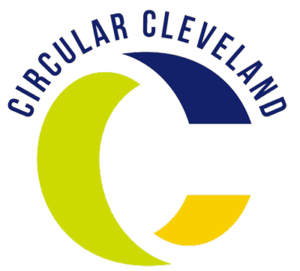About Circular Cleveland
What is Circular Cleveland?
Circular Cleveland is a collaborative effort to refashion the whole of our local economy—who it benefits and what it costs. Circular Cleveland’s goal is to:
Circular Cleveland is led by the City of Cleveland, Cleveland Neighborhood Progress and Neighborhood Connections. It is supported by the Ellen MacArthur Foundation and funded by Robert Wood Johnson Foundation.
Why Circular Cleveland?
In the old “linear economy,” resources taken from nature like timber, minerals, and oil were accounted for in terms of the labor and industrial costs to extract and process them for our use.
They were seen as free for the taking, regardless of the waste and pollution created as they were removed from the environment, manufactured, used, and disposed of. Also ignored in the old economy were the communities who suffered the most from the air, water, and environmental pollution produced. It was all counted as the cost of doing business.
Just as the 1969 fire on the Cuyahoga sparked fundamental changes in the way we value clean water as a resource, this is an opportunity to use our resources and ingenuity to forge a new way forward—one that prioritizes the health of our people and our environment.
Cleveland, along with cities around the world—Toronto, London, Sao Paulo and Charlotte—recognizes the need to value natural resources through their lifespan, using them to their fullest extent through reuse, repair, sharing, recycling and deconstruction. These cities believe that it is possible to build an economy that raises the quality of life for more people and protects the planet.
These cities believe that the future is all about circular thinking: How do we make sure we get the things we need today, without having negative impacts on the future?
Charting a Course for a Circular Cleveland
To plan a way forward, Circular Cleveland has performed a study that shows our current assets and challenges, and lays out a roadmap for transitioning our industry, buildings, natural environment, and consumer goods to a more circular model. Find the study here.
Designing for reuse and deconstruction, developing the practice of repair, and devising cleaner technologies to address pollution all provide new opportunities that can create jobs, improve our natural environment, and, most importantly, the lives and livelihoods of Cleveland residents.



